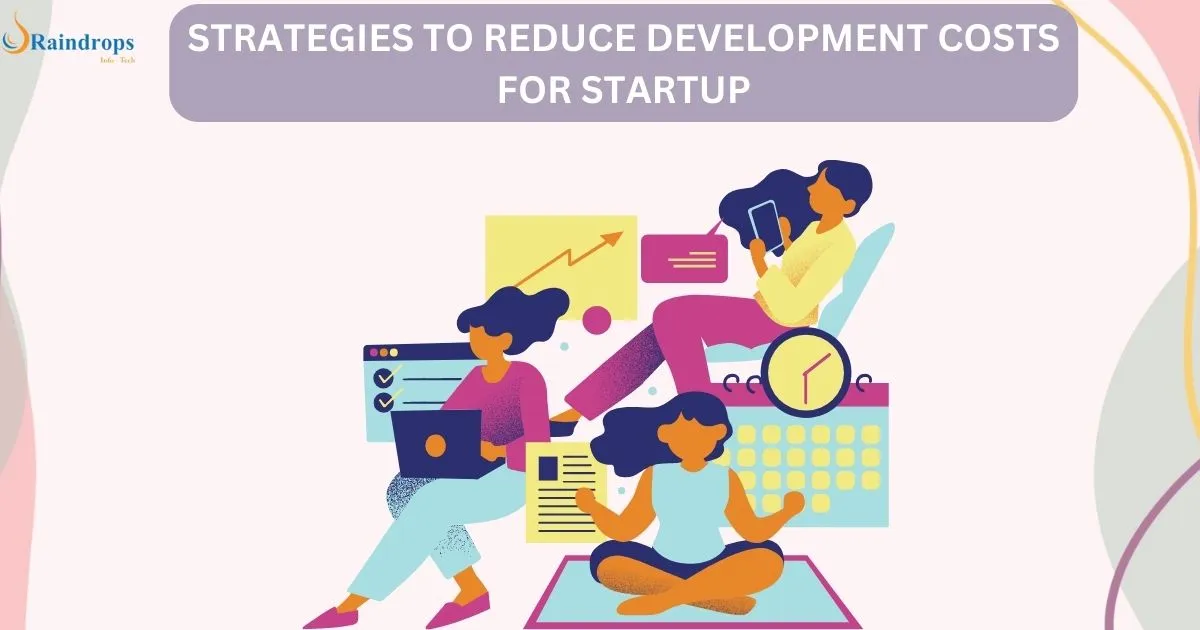TOP 6 COST REDUCTION STRATEGIES FOR STARTUP DEVELOPMENT
Launching a startup comes with its own set of challenges.The main issue being the financial side i.e. how to manage expenses effectively?
You would not want to exhaust all your funds at once, especially in a startup.The area that demands the major financial attention is the “development costs”. Many owners, being new and sceptical, invest money in certain services that are not worth it, and which give zero or low returns in the long run. You would not want to be a part of this group, would you?
To help you in making informed decisions, below we have aimed to write certain cost reduction strategies for startup development. These plans will surely help you in startup budgeting. So, instead of googling in anxiety about this topic, follow these strategies to make sure you don’t spend unnecessary expenses on startup development.

What Is Idea Stage Funding?
Idea stage funding refers to investment made before a startup has a proven product, or revenue- seed investment. Going by the name, it means the funds that you get for the potential idea of your startup. Also known as “pre seed funding”, this stage typically involves the entrepreneur pitching a concept or early stage idea that has yet to be fully validated. At this phase, funding is often small. It is just enough to help take the next steps, like building a product or maybe hiring a small team.
At the idea stage, there is hardly anything to evaluate and judge for investors. As mentioned above, it is only the potential of the idea and the strength of the founding team that serves as the judging factor. And, this is what makes it a high risk game. Though if successful, the return can be huge. You never know, it could turn out to be the next “unicorn startup” as well- Business is all about taking risks.
What are the types of Investors who might fund an Idea Stage Startup?
1. Use Agile Development Practices
First things first, what is Agile Methodology? It is a flexible approach where projects are broken into small parts and completed in short cycles. This helps the teams to adapt quickly based on feedback and make regular improvements. Basically, it’s all about working closely with customers and continuously delivering updates.
Agile methodologies, such as Scrum or Kanban, break down development into smaller cycles. This in turn promotes flexibility and reduces the chances of costly rework.
What are its main benefits?
-
Frequent Feedback: Agile allows developers to regularly test and improve the product. It helps in catching issues in the early stage, even before it becomes a big costly issue.
-
Prioritise Features: Development teams prioritise only the necessary required features and eliminate unnecessary ones. It overall makes things clearer and prevents over-engineering.
-
Cost Control: Another key benefit is, you can better manage time and budget. Each sprint is planned, and costs are estimated. This makes it easier to stay within the project’s budget.

2. Focus on Building an MVP (Minimum Viable Product)
Another strategy you would like to follow is focusing on building an MVP. It stands for Minimum Viable Product. It’s the most basic version of a product that can be released to gather user feedback and validate core functions. The main idea behind is to build just enough to test the market and learn what features are truly needed.
So, rather than building a fully-featured product from the start, many successful startups begin with a Minimum Viable Product (MVP) to test the market.
What are its main benefits?
-
Lower Initial Costs: By focusing on the core and essential features, you can reduce both time and resource investment, eventually leading to low development costs.
-
Faster Time to Market: The quicker you launch, the faster you can start gathering feedback. Early reviews help you improve quickly and stay ahead in the game.
-
Risk Reduction: An MVP allows you to test your idea in the market without committing to a full built app. This reduces the overall risk of expensive product failure.

3. Choose Trusted Partners
The market is crowded with various startups and businesses that offer development services. Choosing a wrong option can heavily cost you. So, it is highly recommended that you choose the right tech partner for your business — do the necessary research, compare different firms, check the pricing charts and then only make a decision. Trust me, it can dramatically reduce overall costs. However, also ensure that the quality of work isn’t compromised.
What are its main benefits?
-
Focus on Core Business: Partnering with various tech development firms allows you to concentrate on more important tasks. While your partners handle specialised tasks, you may focus on your core activities and strategic goals.
-
Access to Specialised Expertise: Instead of hiring and training for every skill, startups can give specialised tasks to experts. This saves time, effort, and most importantly money.
-
Flexibility: Choosing trusted partners also brings flexibility in your business. Outsourcing lets you adjust your team size based on project needs, helping you save money and stay flexible.
For example, Raindrops Infotech has been a trusted partner for many startups looking to reduce development costs. Their flexible pricing models and experienced developers offer the right mix of quality and affordability.

4. Use Open-Source Technologies
Open-source technologies are software tools with source code that anyone can view, use, modify, and distribute freely. Developers can customise them to fit specific needs and contribute improvements. These programs offer free or inexpensive options that work just as well as expensive ones.
What are its main benefits?
-
Cost-Free Licensing: Many open-source solutions do not require licensing fees. This saves substantial costs that would have otherwise been incurred.
-
Customizability: Open-source platforms are highly customizable. This allows your development team to make changes as per the situation.
-
Good Community Support: Open-source communities provide lots of add-ons, tools, and help, often eliminating the need for expensive support services.
Tools like Linux , MySQL, and React JS are open-source solutions widely used in the startup ecosystem.

5. Automate Testing and Deployment
Automating testing and deployment makes development faster and helps avoid mistakes. Eventually, the whole process becomes more efficient and cheaper.
What are its main benefits?
-
Consistent Quality: Automation ensures consistent quality, reduces bugs, and makes the final product more reliable.
-
Reduced Human Error: Eliminating the manual process decreases the chances of missing bugs during testing.
-
Faster Time to Market: Automated CI/CD pipelines help deliver features faster and more efficiently.
Tools like Selenium and Jenkins are widely used to automate repetitive tasks, saving time and resources.

6. Choose the Right Tech Stack
Choosing the right tech stack is extremely important. Consider every factor while doing so — from analysing market trends to considering short-term and long-term plans. Also, compare pricing policies. Selecting the right technology stack can significantly reduce long-term costs. Opt for technologies that are well-supported and widely adopted.
What are its main benefits?
-
Easier Integration: Using widely adopted tech stacks ensures smoother integration with other tools and services, saving time and reducing compatibility issues.
-
Lower Hiring Costs: Popular tech stacks like React.js, Node.js, or Python have many developers available, making it easier and cheaper to hire skilled people.
-
Higher Productivity: Popular frameworks have lots of helpful tools and libraries already built, so you spend less time coding from scratch.

Reducing development costs for your startup doesn’t mean compromising on quality. From using agile development practices to making strategic decisions while choosing tech partners and utilising Artificial Intelligence, there are plenty of ways to keep costs in check. Mind you, this happens while ensuring your product meets market expectations. Startups like yours can benefit immensely from these strategies.
So, without wasting any further time, follow this guide to make sensible decisions. And, gift your startup a strategy that balances quality and cost.






